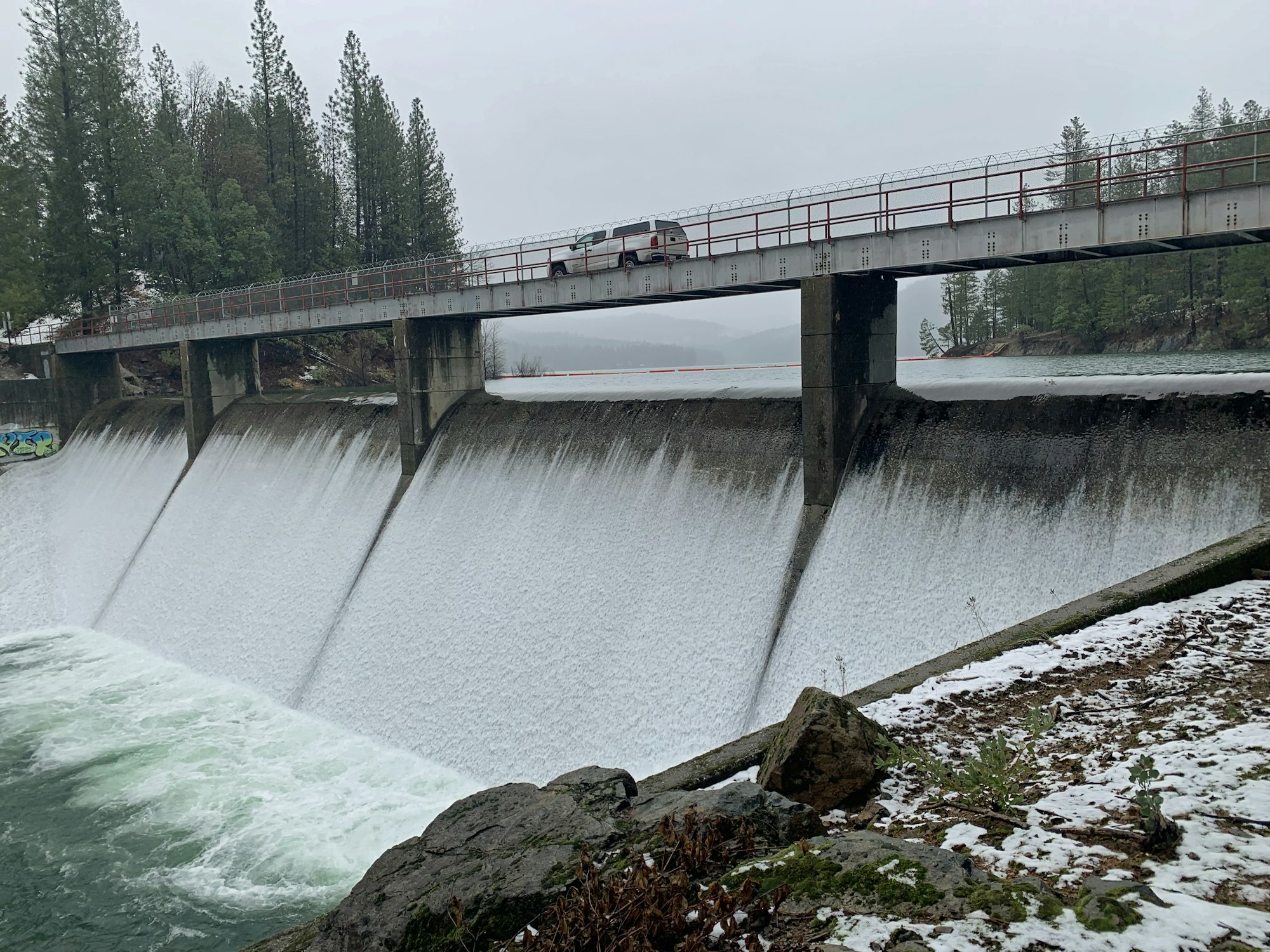Storms fill NID reservoirs
Dams spill as designed

(Grass Valley, Jan. 9, 2023) The ongoing storms are filling local reservoirs to capacity, according to the Nevada Irrigation District (NID). The District’s dam system is functioning as it should.
“None of the flows are beyond the capacity of the District’s dams or spillways to safely pass,” said NID’s Director of Power Systems Keane Sommers. “The current flows are fairly routine in nature and similar to those experienced in prior years.”
Both Rollins Reservoir (capacity of 65,998 acre-feet) and Combie Reservoir (capacity of 5,555 acre-feet) are full and have been spilling for days. Scotts Flat Reservoir (capacity of 48,547 acre-feet) is projected to spill on Monday, January 9.

The dams have "spillways" designed to automatically release high flows prior to causing a dam safety issue. Despite the dramatics of cascading water, the flows from the dams are well below the threshold for high flow notification, which is 20,000 cubic feet per second (cfs) at Rollins and Combie and 15,000 cfs at Scotts Flat. “Cfs” is the unit of measurement referring to the volume of water flow. The current flow out of Rollins Dam is approximately 1,750 cfs, compared to the peak flow of about 6,300 cfs on Dec. 31. The current flow out of Combie Reservoir is higher, approximately 2,550 cfs. The peak flow was approximately 9,900 cfs on Dec. 31, 2022.
Of note, because Rollins and Combie Reservoirs are already spilling, the District has no ability to significantly reduce flows in the Bear River at this time.
“Flows will increase and decrease as rain moves in and out of the area,” Sommers said. “Scotts Flat Dam will begin to spill soon, which will increase flows in Deer Creek. Flooding may occur in low-lying and poor drainage areas. Expect flooding in the usual places.”
He noted that as part of NID’s normal storm response, the District has increased patrols of infrastructure structures.

